COPD Social Media Resources to Help People #BreatheBetter
Raise awareness about COPD by sharing these graphics and sample posts on your social media channels.
- Use hashtags: #COPDMonth in November and #BreatheBetter year-round
- Follow us! @BreatheBetter on X, @BreatheBetter on Facebook, and @nhlbi-lung on LinkedIn
You may also be interested in our other social media resources, including videos, state-based COPD prevalence cards, COPD: Portraits of Lung Health at Any Age infographic, smoking and lung health social media resources, The COPD Caregiver’s Toolkit and infographic, COPD in Rural Communities infographic, women and lung health graphics, and a work-related COPD infographic.

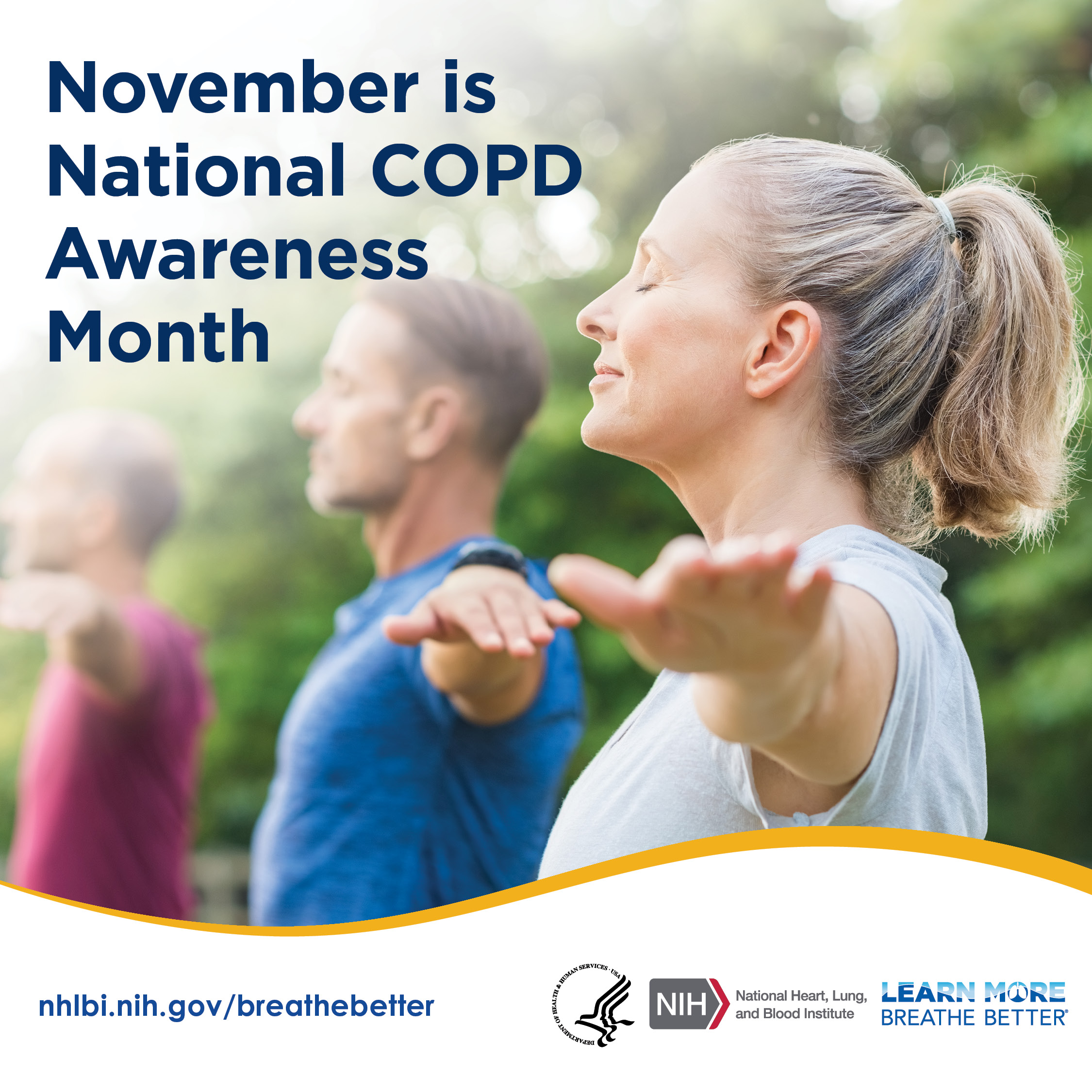
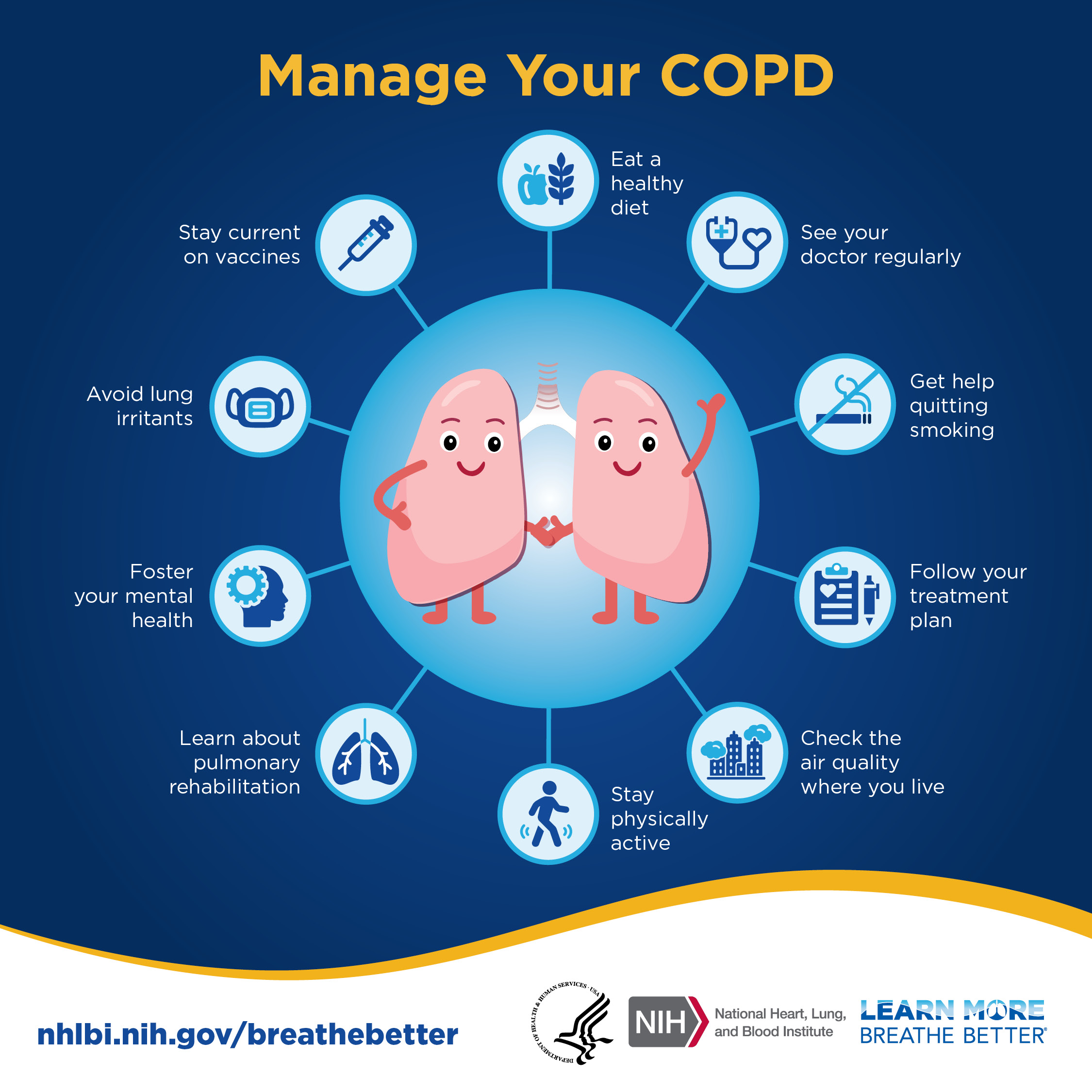

Eat a healthy diet, see your doctor regularly, get help quitting smoking, follow your treatment plan, check the air quality where you live, stay physically active, learn about pulmonary rehabilitation, foster your mental health, avoid lung irritants, stay current on vaccines.
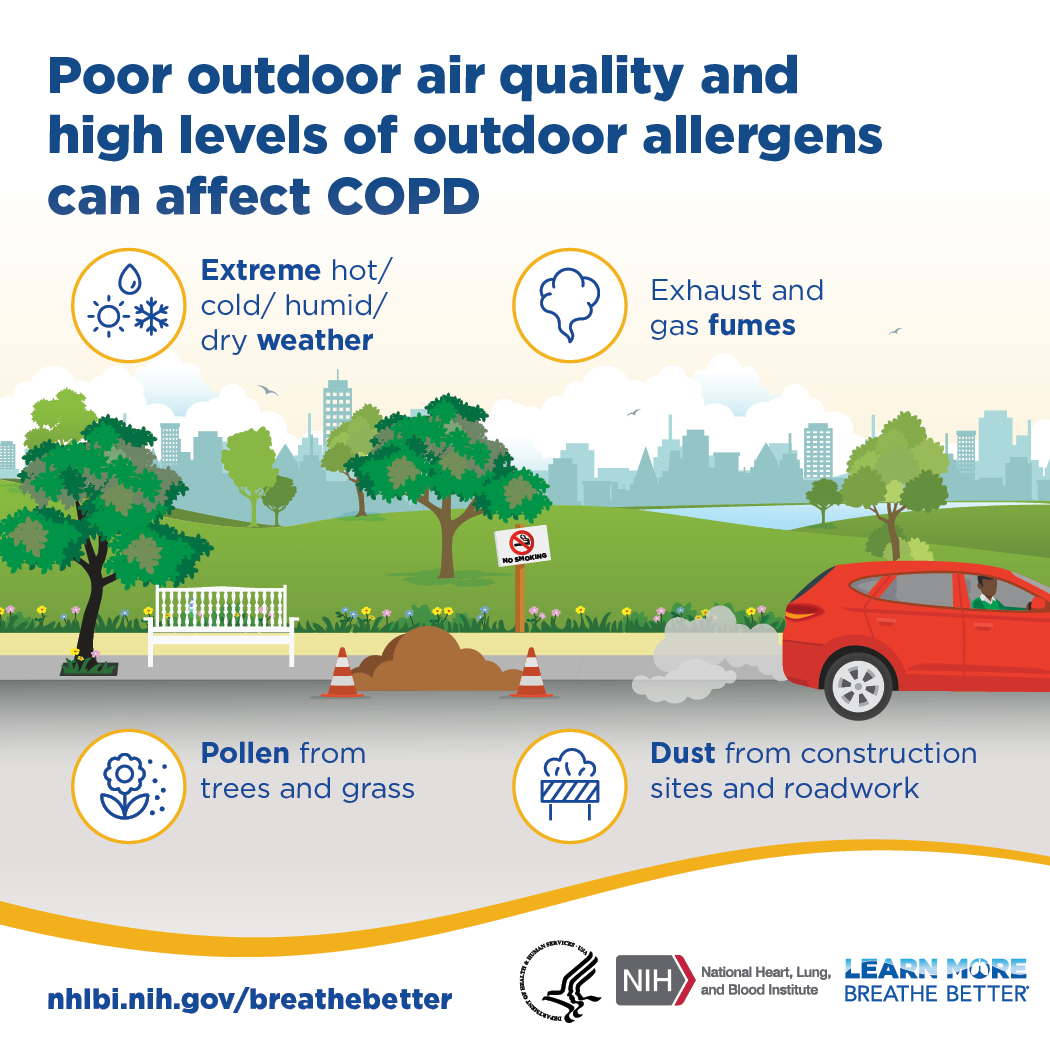

- Extreme hot/cold/humid/dry weather. Exhaust and gas fumes.
- Pollen from trees and grass.
- Dust from construction sites and roadwork.

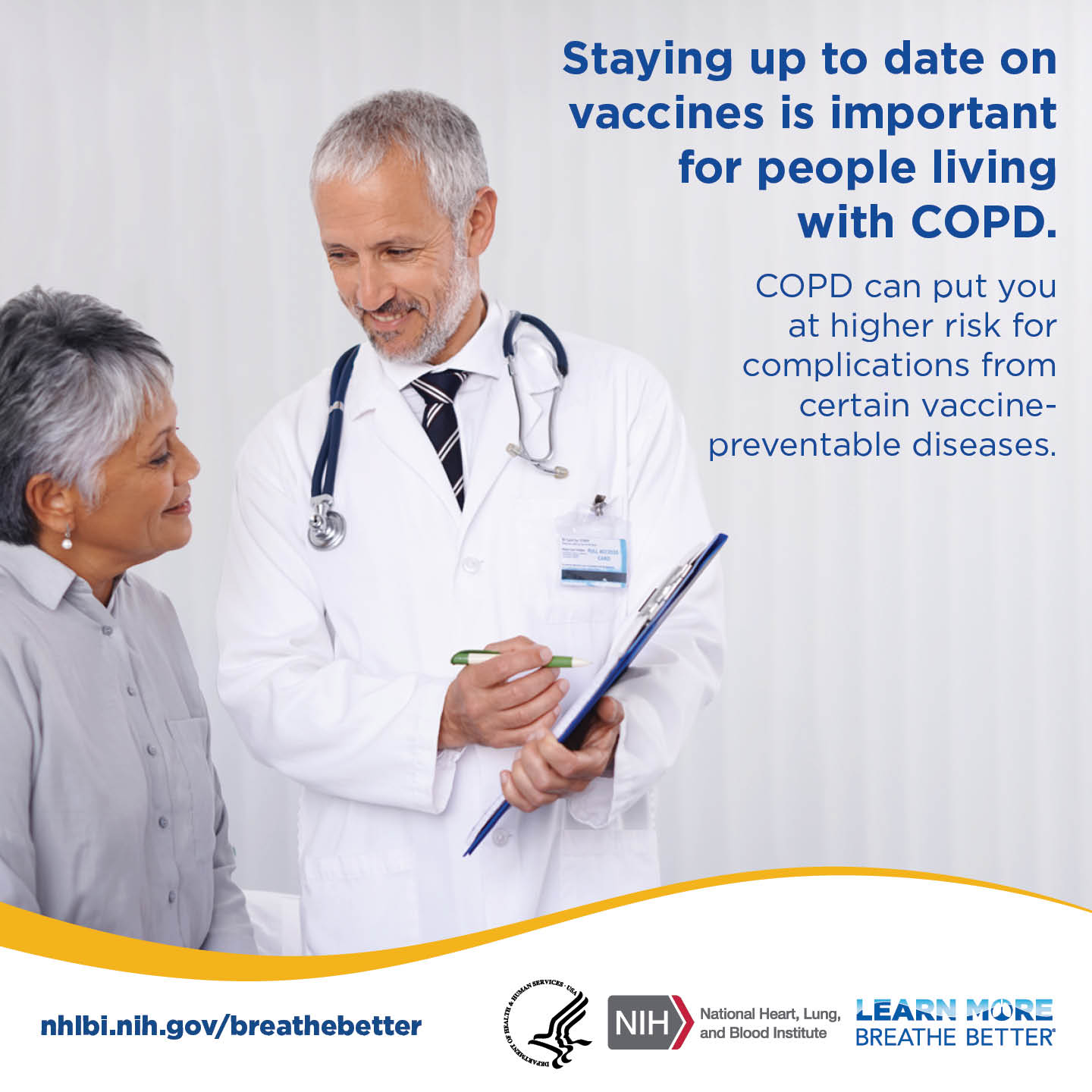

COPD can put you at higher risk for complications from vaccine-preventable diseases.
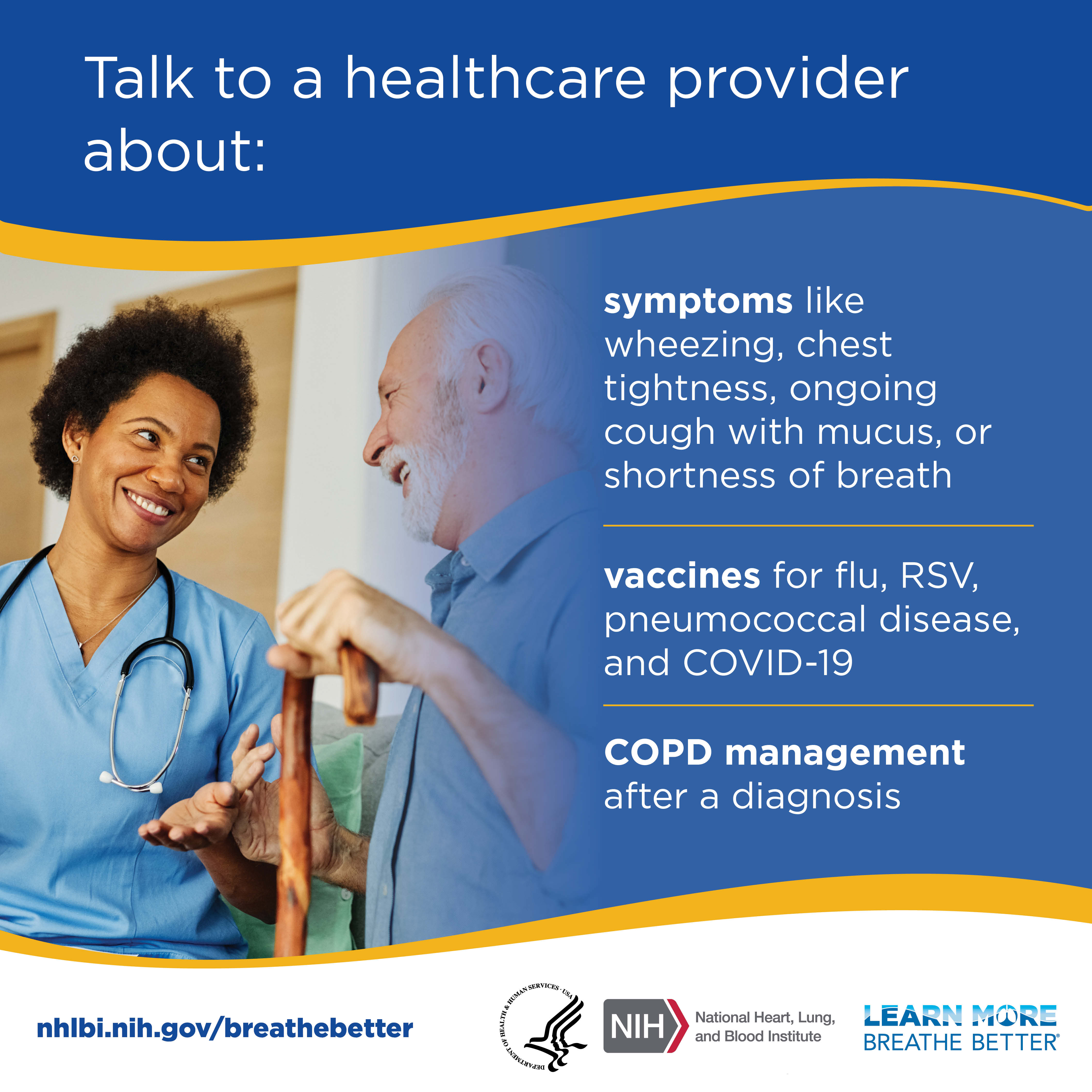

Talk to a healthcare provider about: symptoms like wheezing, chest tightness, ongoing cough with mucus, or shortness of breath; vaccines for flu, RSV, pneumococcal disease, and COVID-19; COPD management after a diagnosis.

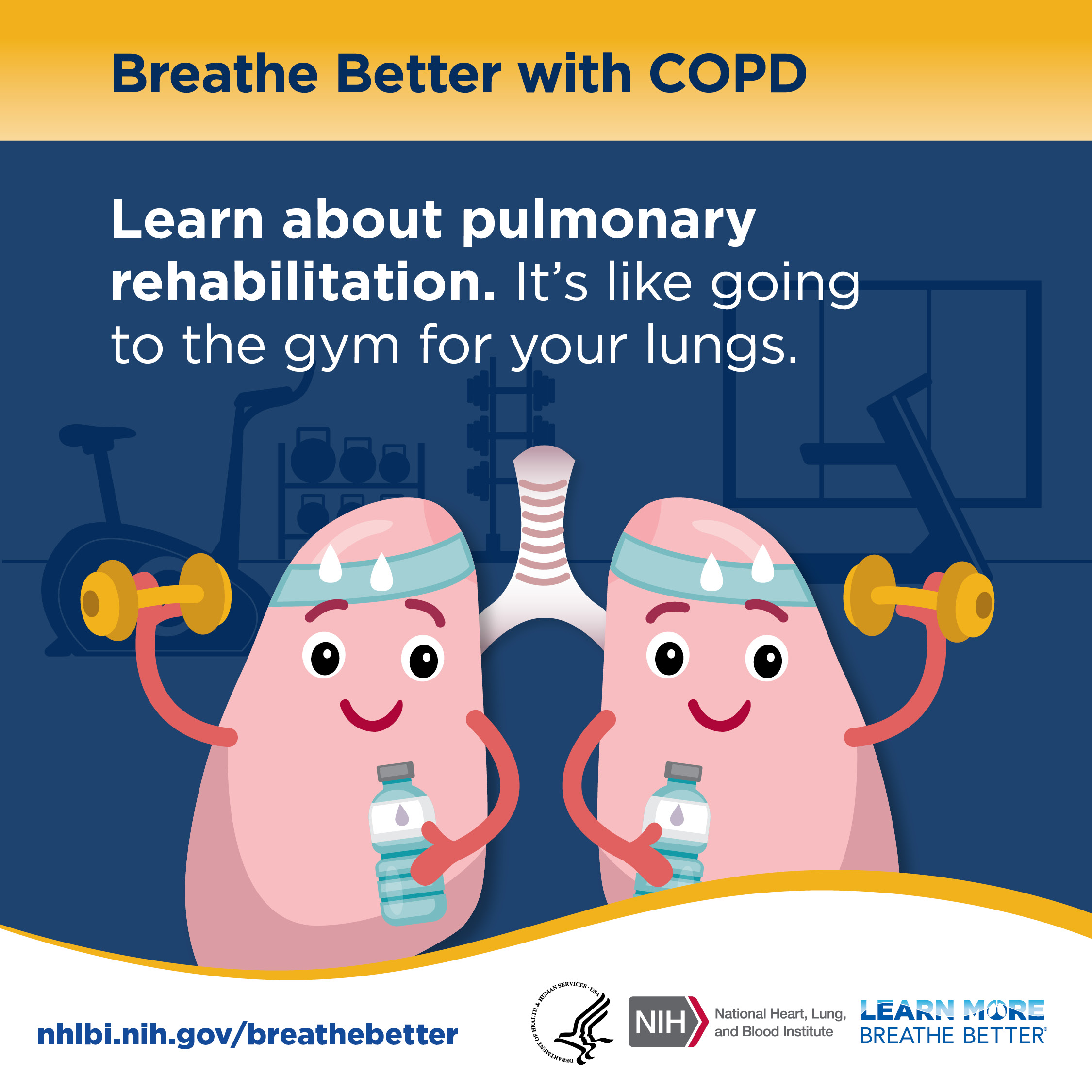

Learn about pulmonary rehabilitation. It's like going to the gym for your lungs.
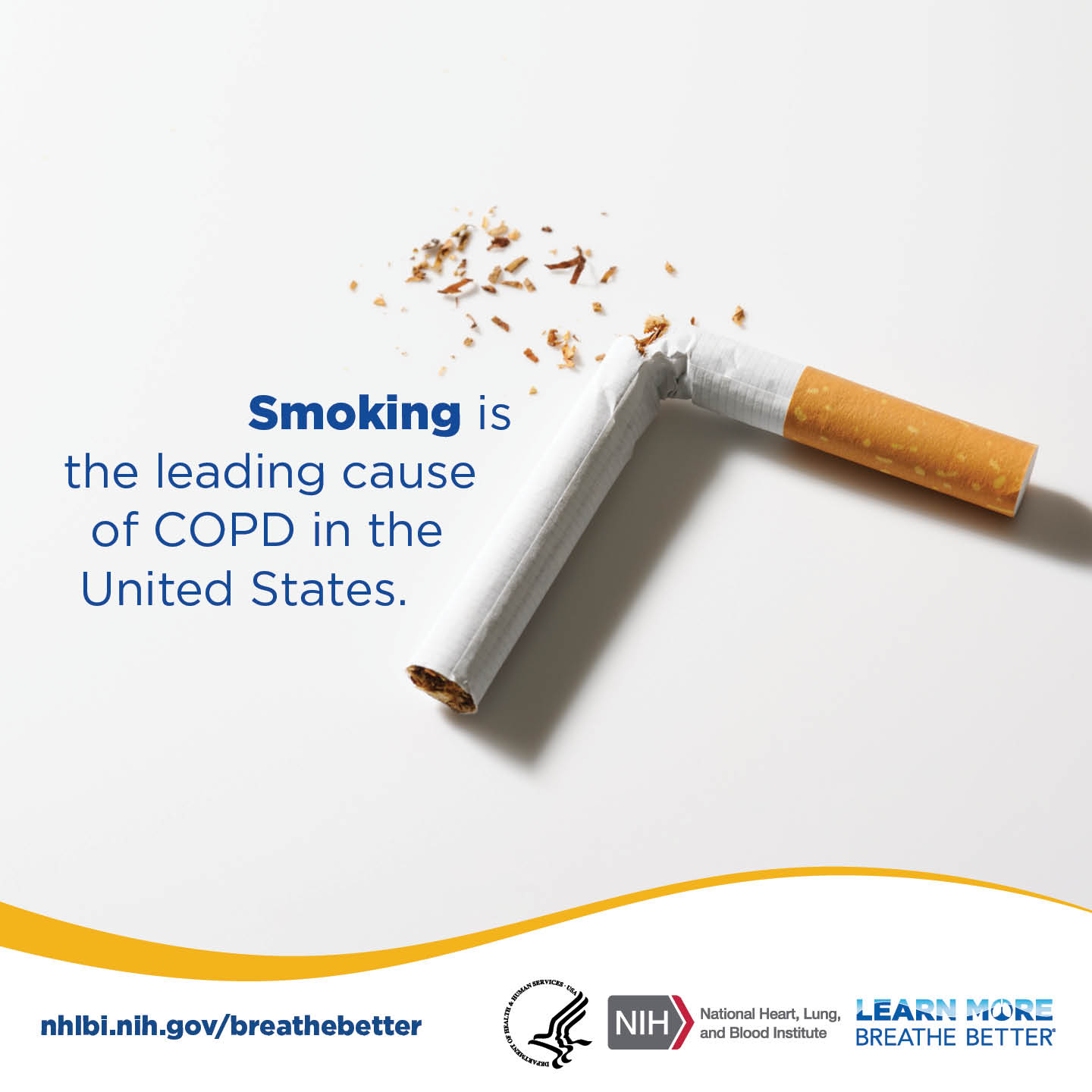
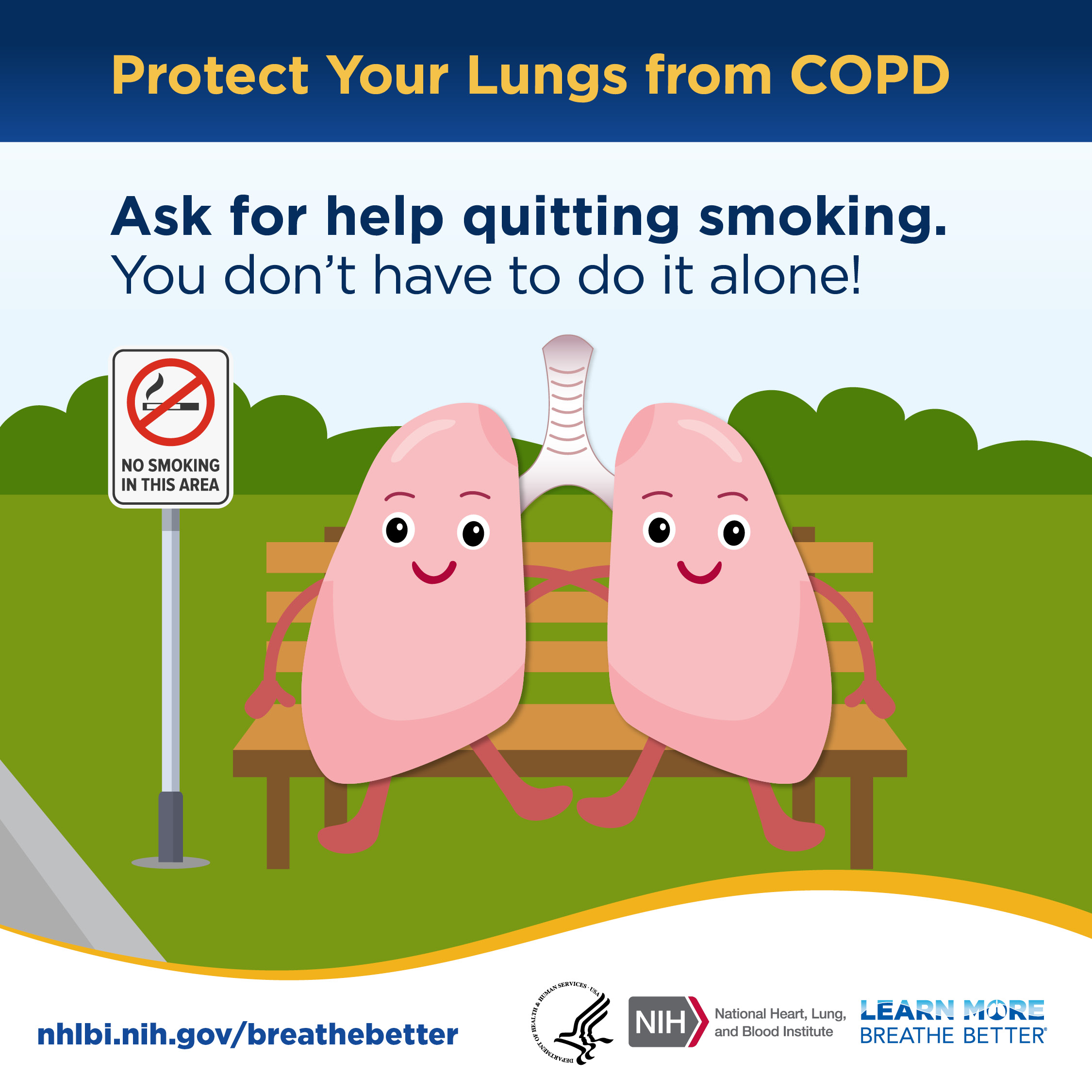

Ask for help quitting smoking. You don't have to do it alone!
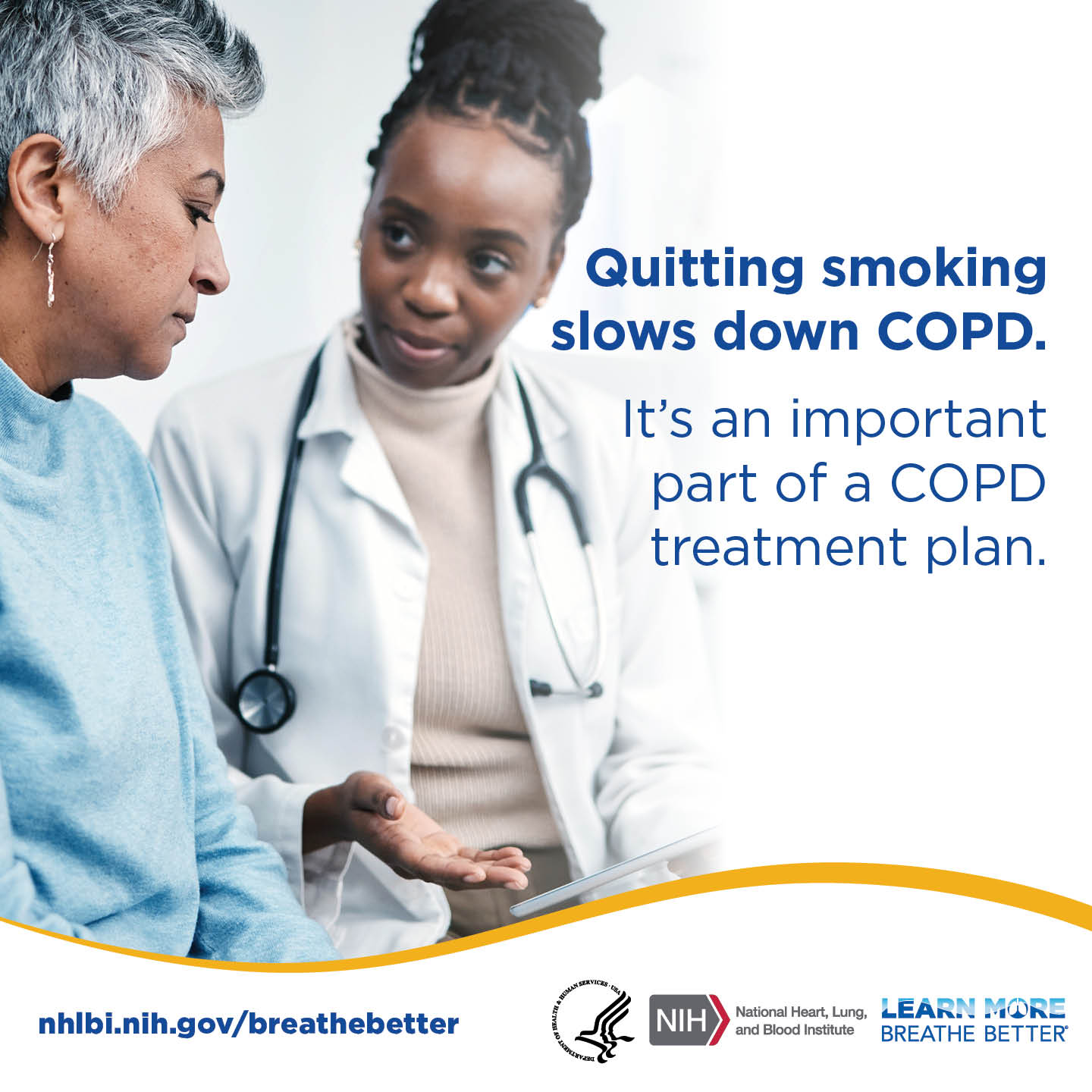
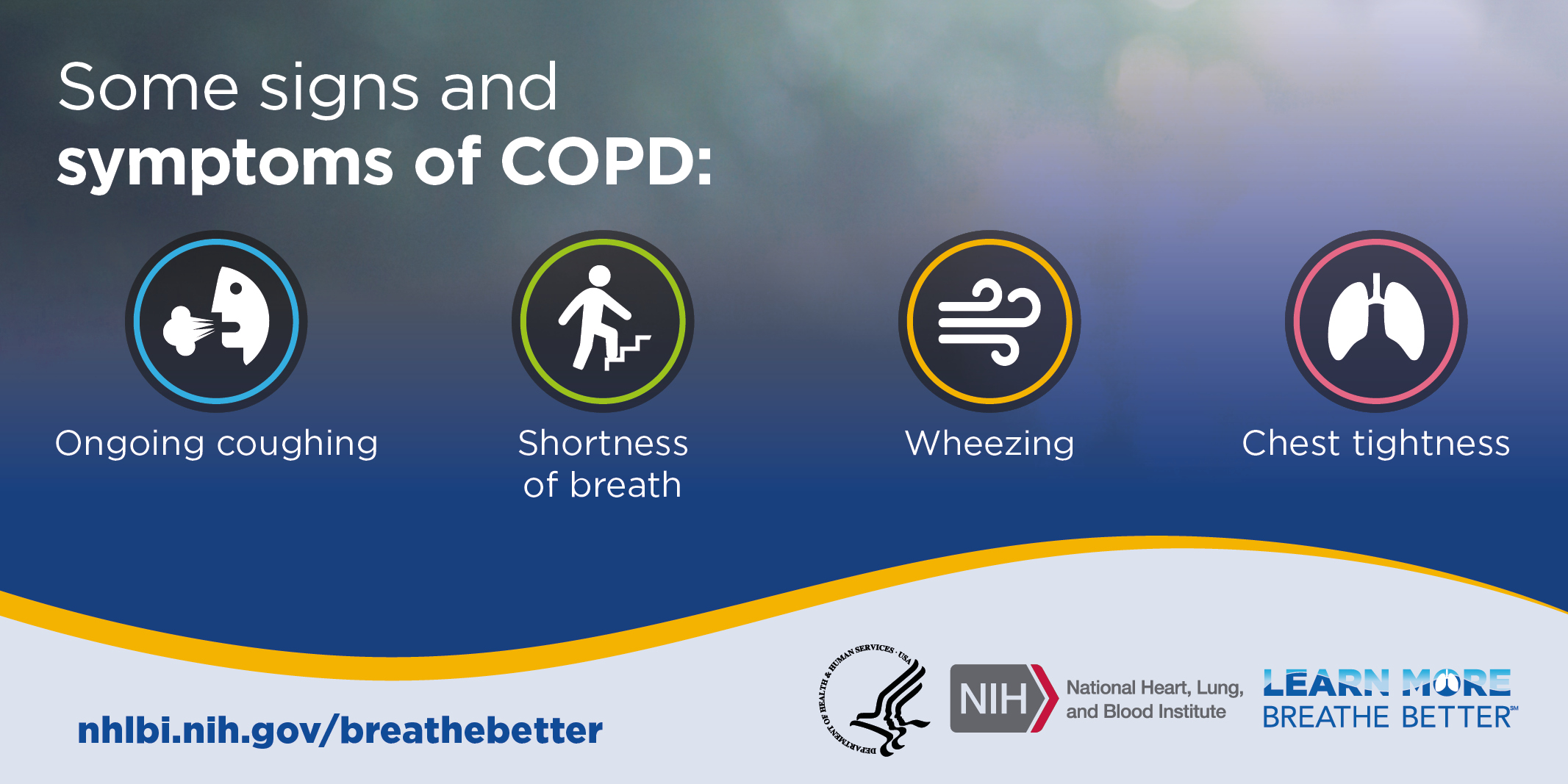


- Always feeling tired
- Getting sick often
- Losing interest in activities you used to enjoy
- Feeling irritated, impatient, or forgetful
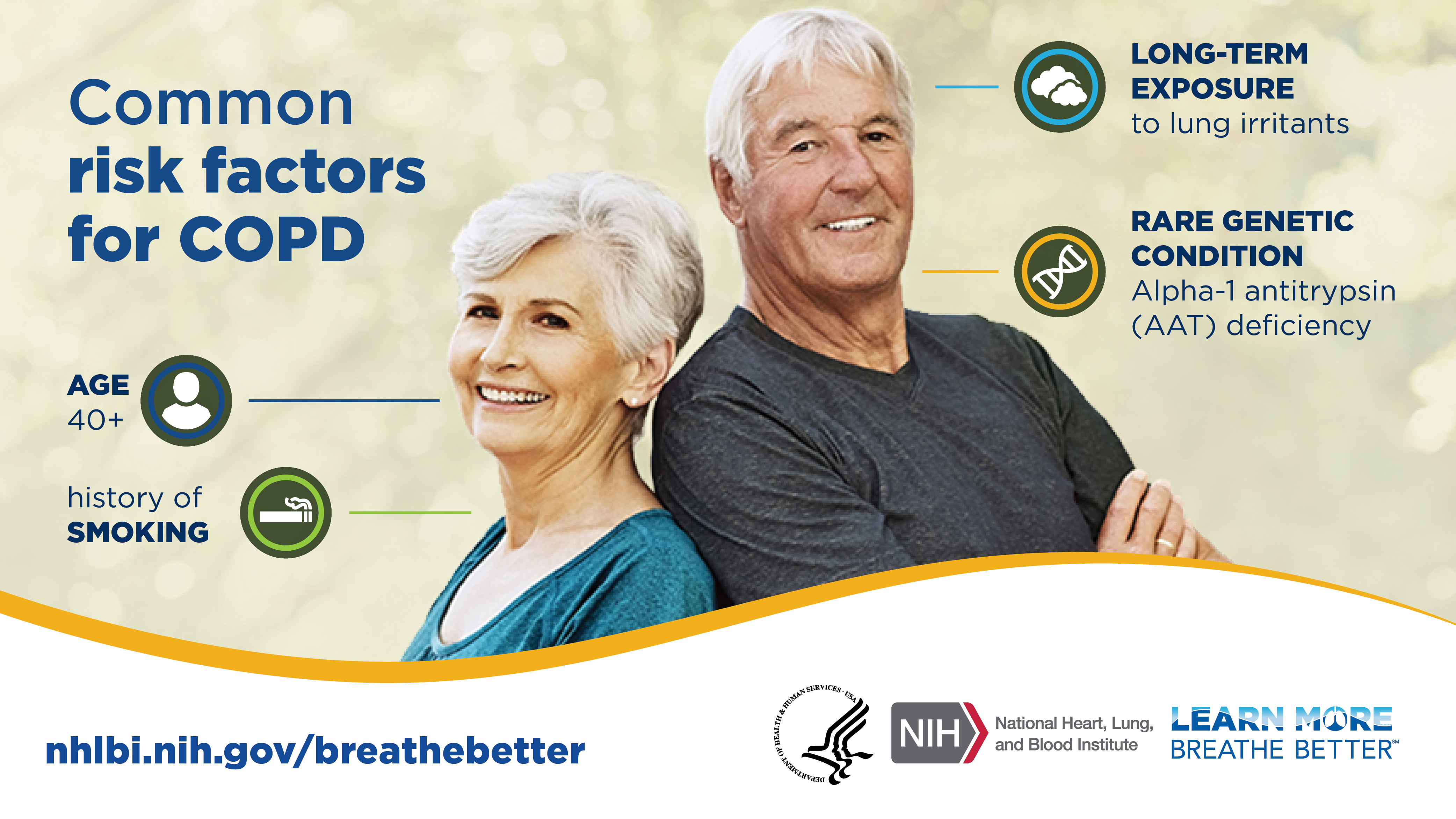

- Age 40+
- History of smoking
- Long-term exposure to lung irritants
- Rare genetic condition Alpha-1 antitrypsin (AAT) deficiency

